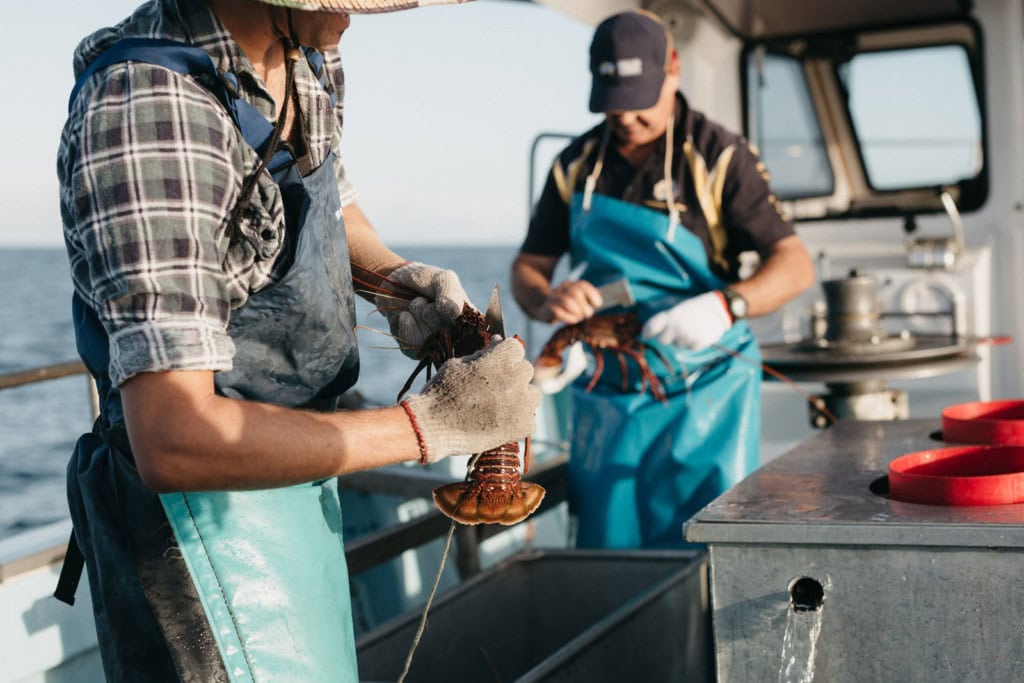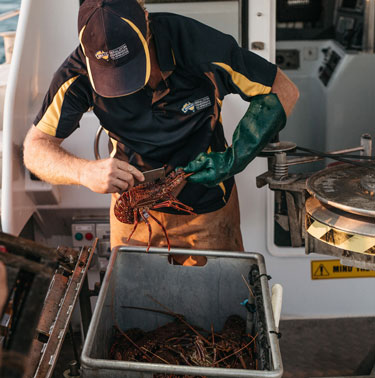
When the COVID-19 pandemic threatened to capsize the Geraldton Fishermen’s Co-operative, it found an unlikely compass to help navigate the choppy waters.
Battered by trade winds and caught in the riptide of global uncertainty, the Geraldton Fishermen’s Co-operative (GFC) found itself in dire straits in 2020.
Lunar New Year celebrations – typically a bonanza for the co-operative – were cancelled due to the COVID-19 pandemic. Lobster demand plummeted, and prices dropped to an unthinkable zero.
The co-operative, responsible for about 60 per cent of Western Australia’s $500 million rock lobster industry, was forced to take drastic action and halt all deliveries.
As the world continued to grapple with the impact of the pandemic, another blow landed in 2021: trade tensions with China.
Stringent new inspections for Australian lobsters led to extended customs clearance times, raising concerns about product viability and further dampening demand.
In these turbulent waters, the GFC found an unexpected ally in the Mutual Value Measurement Framework (MVM).
Created by the interdisciplinary Mutual Value Lab at Monash Business School in partnership with the Business Council of Co-operatives and Mutuals (BCCM), the world-first accredited framework enables co-operatives and mutuals measure their total value creation through a set of common dimensions and shared language.

Beyond the bottom line
Matt Rutter, who was GFC chief executive from 2018 to 2024, said the MVM Framework was a game-changer, providing a structured way to identify and measure value across the organisation.
Using the full weight of its market value enabled the GFC to renegotiate unfair lobster quota lease arrangements, which loaded most of the risk onto fishers while investors enjoyed guaranteed returns.
The results were astounding. More than 90 per cent of investors agreed to more equitable shared risk and reward arrangements, ultimately helping to stabilise the local market.
The framework had been so successful, it was now a cornerstone of the GFC’s strategic planning, guiding resource allocation and decision-making towards long-term value creation.
“We always found it difficult to justify some of the things we might be doing to create value that in a traditional strategic planning sense wouldn’t have been recognised,” Mr Rutter said.
“The beauty of the MVM model is that it just calls out those activities, which we probably took for granted, and now we can assign value under those really well-defined dimensions.”

The MVM Framework is a strategic tool
Director of the Mutual Value Lab Associate Professor Paul Thambar said co-operatives and mutuals are increasingly embracing the framework as a strategic tool to supercharge their impact.
“The MVM Framework allows the cooperative or mutual to continuously align its purpose with how it creates value and then to measure and communicate that value,” he said.
Co-creator Professor Matthew Hall said the framework “always ensures that what is on the table is what really matters to the cooperative or mutual.”
More than 30 Australian co-operatives and mutuals are already on board, with international adoption on the rise.
“We have our first UK mutual bank working with the framework,” A/Prof Thambar said.
“In the US, public sector risk mutuals are beginning to work with the framework. We are hoping to move into the Asia-Pacific region as well.”
Revolutionising social care in the regions
In a bold move to address shortcomings in social care provision, the team and industry partner Business Council of Co-operatives and Mutuals (BCCM) are now using the framework to create Australia’s first co-operative and mutual enterprise support program.
The Care Together program will redefine social care delivery in remote and regional Australia, targeting improved services for older Australians, individuals with disabilities, veterans, and First Nations peoples.
Backed by funding from the Australian Government, the two-year pilot will establish 12 co-operatives, strategically positioned to bridge gaps in under-serviced regions.
The framework will be used to design the co-operatives, and then later measure the value they have created.
According to A/Prof Thambar, traditional profit-driven organisations have struggled to meet the diverse needs of these regions, making it imperative to explore alternative models.
“We’re focusing on regional and remote areas because the government is concerned these areas are under-serviced by social care providers,” A/Prof Thambar said.
“This pilot program will explore whether co-operatives are better suited to deliver this work.”
He stressed the broader significance of the initiative, highlighting its potential to empower communities and foster collaboration between workers and service users.
“Our goal is to see communities thrive, with access to vital social care that truly meets their needs.”
Images used with permission from Geraldton Fishermen’s Co-operative


